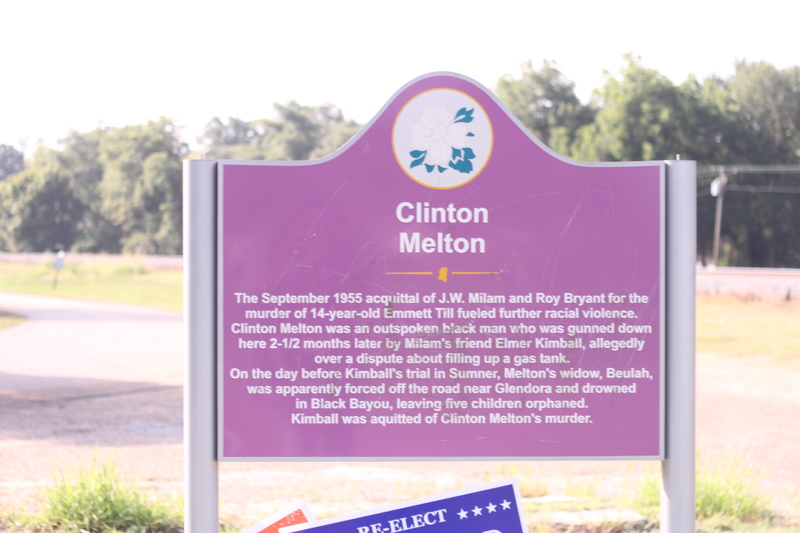The Murder of Clinton Melton
Another Murder, Another White Man, Another Acquittal. Or How County Lines Are Shaping Till's Story

In December 1955, J. W. Milam’s neighbor (and Till murder accomplice) Elmer Kimbrell murdered African American gas station attendant Clinton Melton.
Kimbrell was irate because Melton had filled his entire gas tank instead of simply putting in $2 as he had supposedly requested. Based on this slight, Kimbrell retrieved a shot gun and killed Melton on the spot.
There were two African American witnesses to the murder, but it mattered not. Another all-white jury was convened in the Sumner courthouse, and another not-guilty verdict was reached.
Curiously, this is the only site on the Tallahatchie Civil Rights Driving Tour not directly related to the Till murder. The Emmett Till Memorial Commission included this site at the urging of Plater Robinson, but one wonders why they did so.
The oddity of including the Melton murder site is only enhanced when we consider that the Commission did not commemorate several sites of obvious importance to the Till story: Bryant’s Grocery (where the whistle happened), the Wright home (site of the abduction), or the Milam Plantation (murder site).
Although the Melton murder is certainly tragic, from the perspective of the Till story (and the Commission’s mission), it pales in significance when compared to these other sites. Why, then, did the Commission include it? One reason: it is in Tallahatchie County and the other sites are not. By virtue of its bylaws, the Commission is tasked with generating revenue in Tallahatchie County. When it comes to commemoration then, the activity of the Commission is driven not simply by the facts of the murder; they are also driven by questions of jurisdiction. If it didn’t happen in Tallahatchie County, the Commission has not commemorated it.
The full name of the Commission? The Emmett Till Memorial Commission of Tallahatchie County, Inc. When Till commemoration was in its infancy in Mississippi, county lines mattered as much as the story itself. Sites inside Tallahatchie County were remembered even if they bore little connection to the Till story. Sites outside the county were not, even if they were intimately connected to the story.
Images

Documents
| Name | Info | Actions |
|---|---|---|
| Tallahatchie Civil Rights Driving Tour brochure | pdf / 854.33 kB | Download |